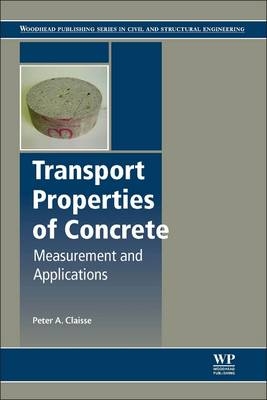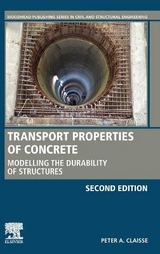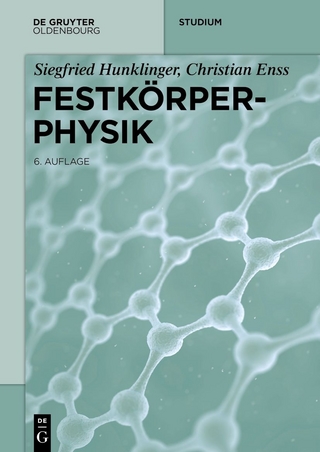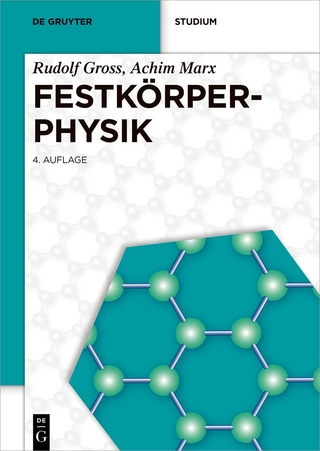
Transport Properties of Concrete
Woodhead Publishing Ltd (Verlag)
978-1-78242-306-5 (ISBN)
- Titel erscheint in neuer Auflage
- Artikel merken
Transport Properties of Concrete covers how to measure the ability of ions and fluids to move through concrete material, and how to use the results to model performance. These transport properties largely determine the durability of concrete and of steel embedded within it, as well as the effectiveness of structures such as landfill containment barriers.
The book begins by explaining in detail what transport properties are and how to write computer models for transport processes. Early chapters present and explain computer models written in basic code. Coverage then proceeds to a wide range of tests for the transport properties of concrete, and methods for calculating the values for these properties from the test results using analytical and numerical models. The final chapters then show how the values obtained can be used to predict the durability of reinforced concrete, to model the effect of gas pressure, and to model waste containment structures. A number of practical examples are given, in which the calculations and computer models have been applied to real experimental data.
Transport Properties of Concrete provides a comprehensive examination of the subject, and will be of use to all concerned with the durability and effectiveness of concrete structures.
Peter A. Claisse is Professor Emeritus at Coventry University and the author of more than 100 publications on construction and materials, including the Woodhead title Transport Properties of Concrete: Measurements and Applications. He graduated with a degree in Physics from Oxford University and then spent the next 9 years working as a Civil Engineer on major UK construction sites including 4 years on the Torness nuclear power station.?After obtaining a PhD in Civil Engineering at Leeds University, studying Silica Fume in concrete, he then went to the AEA Technology Harwell laboratory for 3 years to work on Nuclear waste containment.?He was at Coventry University for 20 years, teaching Civil Engineering Materials and researching transport processes in concrete and the use of secondary materials in cement.
Author contact details
Woodhead Publishing Series in Civil and Structural Engineering
Introduction
The fundamental equations
Computer codes
Structure of this book
Experimental data
Summary of contents
References
Acknowledgements
1. The transport properties of concrete and the equations that describe them
Abstract:
1.1 Introduction
1.2 The transport processes
1.3 Processes which increase or reduce the transport
1.4 Conclusions
1.5 References
2. Computer models to predict the transport processes in concrete
Abstract:
2.1 Introduction
2.2 Expressing the basic equations as computer code
2.3 Other elements of the code
2.4 Example: calculations for a waste containment barrier
2.5 Conclusions
2.6 Reference
3. Surface tests to determine transport properties of concrete – I: the tests
Abstract:
3.1 Introduction
3.2 The initial surface absorption test (ISAT)
3.3 The Figg air permeation index
3.4 Other tests
3.5 Vacuum preconditioning: a development of the ISAT test
3.6 Vacuum preconditioning for other tests
3.7 Conclusions
3.7 References
4. Surface tests to determine transport properties of concrete – II: analytical models to calculate permeability
Abstract:
4.1 Introduction
4.2 Additional tests
4.3 Modelling of the absorption tests
4.4 Experimental testing for absorption
4.5 Tests using a vacuum to measure air flow
4.6 The choice of test for practical applications
4.7 Conclusions
4.8 References
5. Surface tests to determine transport properties of concrete – III: measuring gas permeability
Abstract:
5.1 Introduction
5.2 Theoretical analysis
5.3 Investigation of methods for sealing the drilled holes
5.4 Determination of pressure decay profile
5.5 Comparison of in situ test methods
5.6 Conclusions
5.7 References
6. Measurements of gas migration in concrete
Abstract:
6.1 Introduction
6.2 Experimental method
6.3 Analysis of experimental data
6.4 Results for gas permeability of concrete
6.5 Comparison with gas permeability of grouts
6.6 The effect of interfaces on gas permeability
6.7 Discussion
6.8 Conclusions
6.9 Reference
7. Water vapour and liquid permeability measurements in concrete
Abstract
7.1 Introduction
7.2 Experimental methods
7.3 Methods of analysis of results
7.4 Results and discussion
7.5 Conclusions
7.6 References
8. Measurement of porosity as a predictor of the transport properties of concrete
Abstract:
8.1 Introduction
8.2 Sample preparation and testing programme
8.3 Tests for porosity
8.4 Tests for properties controlled by transport
8.5 Oxygen transport
8.6 Vapour transport
8.7 Results and discussion
8.8 Conclusions
8.9 References
9. Factors affecting the measurement of the permeability of concrete
Abstract:
9.1 Introduction
9.2 Experimental programme
9.3 Results
9.4 Discussion
9.5 Conclusions
9.6 References
10. Electrical tests to analyse the transport properties of concrete – I: modelling diffusion and electromigration
Abstract
10.1 Introduction
10.2 The ASTM C1202 test and the salt bridge
10.3 The physical processes
10.4 Analytical solutions
10.5 The computer model
10.6 Initial experimental validation
10.7 Full model validation
10.8 Conclusions
10.9 References
11. Electrical tests to analyse the transport properties of concrete – II: using a neural network model to derive diffusion coefficients
Abstract:
11.1 Introduction
11.2 Experimental method
11.3 Neural network optimisation model
11.4 Results and discussion
11.5 Conclusions
11.6 References
12. Electrical tests to analyse the fundamental transport properties of concrete – III: modelling tests without applied voltages
Abstract:
12.1 Introduction
12.2 Test methods
12.3 The analytical solution
12.4 Computer modelling – theoretical background
12.5 Experimental programme
12.6 Results and discussion
12.7 Conclusions
12.8 References
13. Applications using measured values of the transport properties of concrete I: predicting the durability of reinforced concrete
Abstract
13.1 Introduction
13.2 Controlling parameters for concrete durability
13.3 Measuring corrosion of reinforcement
13.4 Correlating transport measurements with corrosion
13.5 Predictive models for corrosion
13.6 Conclusions
13.7 References
14. Applications using measured values of the transport properties of concrete II: modelling the effect of gas pressure
Abstract:
14.1 Introduction
14.2 Background: mechanisms of gas migration
14.3 The effects of stress generation in cementitious materials
14.4 Sensitivity to material properties and conditions
14.5 Behaviour in a repository
14.6 Conclusions
14.7 References
15. Applications using measured values of the transport properties of concrete – III: predicting the transport of liquids through concrete barriers for waste containment
Abstract:
15.1 Introduction
15.2 The computer model
15.3 Laboratory testing
15.4 Site trials
15.5 Reducing transport in cracked concrete
15.6 Conclusions
15.7 References
Conclusions, recommendations and guidance for measuring transport properties of concrete
The state of the art
Recommendations and guidance
Appendix 1: List of papers for the experimental data and derivations
Appendix 2: Notation and abbreviations
Notation
Abbreviations
Index
| Reihe/Serie | Woodhead Publishing Series in Civil and Structural Engineering |
|---|---|
| Verlagsort | Cambridge |
| Sprache | englisch |
| Maße | 156 x 234 mm |
| Gewicht | 620 g |
| Themenwelt | Naturwissenschaften ► Physik / Astronomie ► Festkörperphysik |
| Technik ► Bauwesen | |
| Technik ► Maschinenbau | |
| ISBN-10 | 1-78242-306-0 / 1782423060 |
| ISBN-13 | 978-1-78242-306-5 / 9781782423065 |
| Zustand | Neuware |
| Haben Sie eine Frage zum Produkt? |
aus dem Bereich



